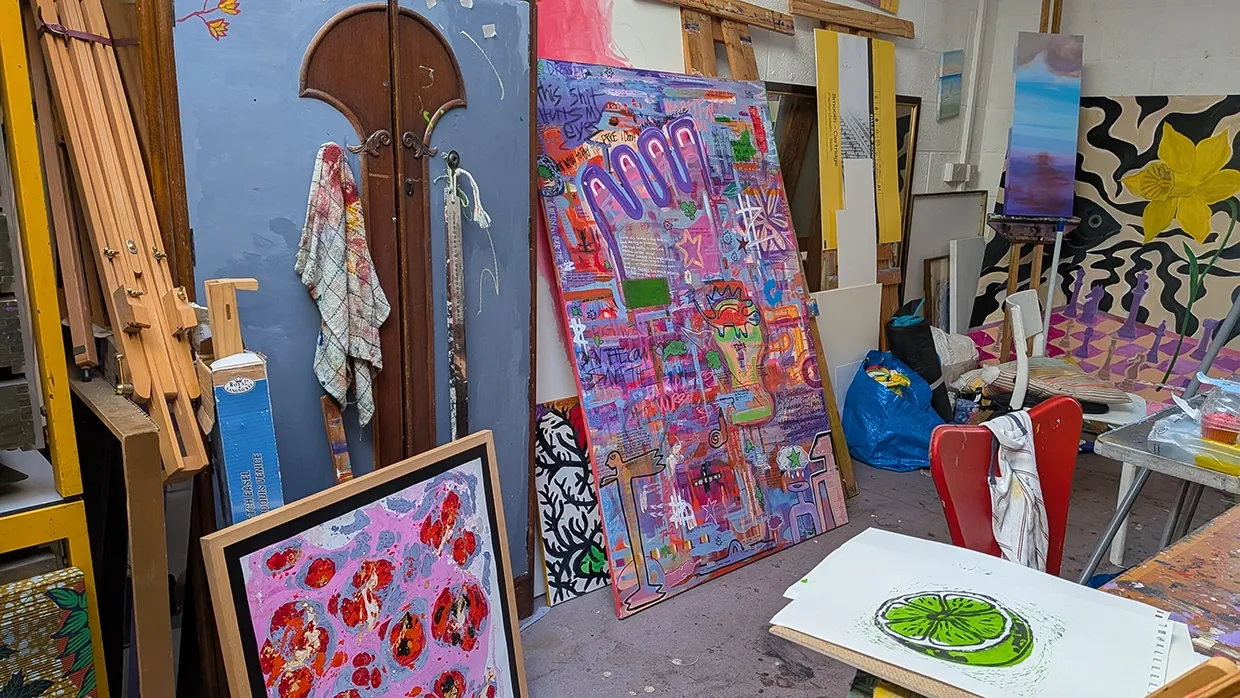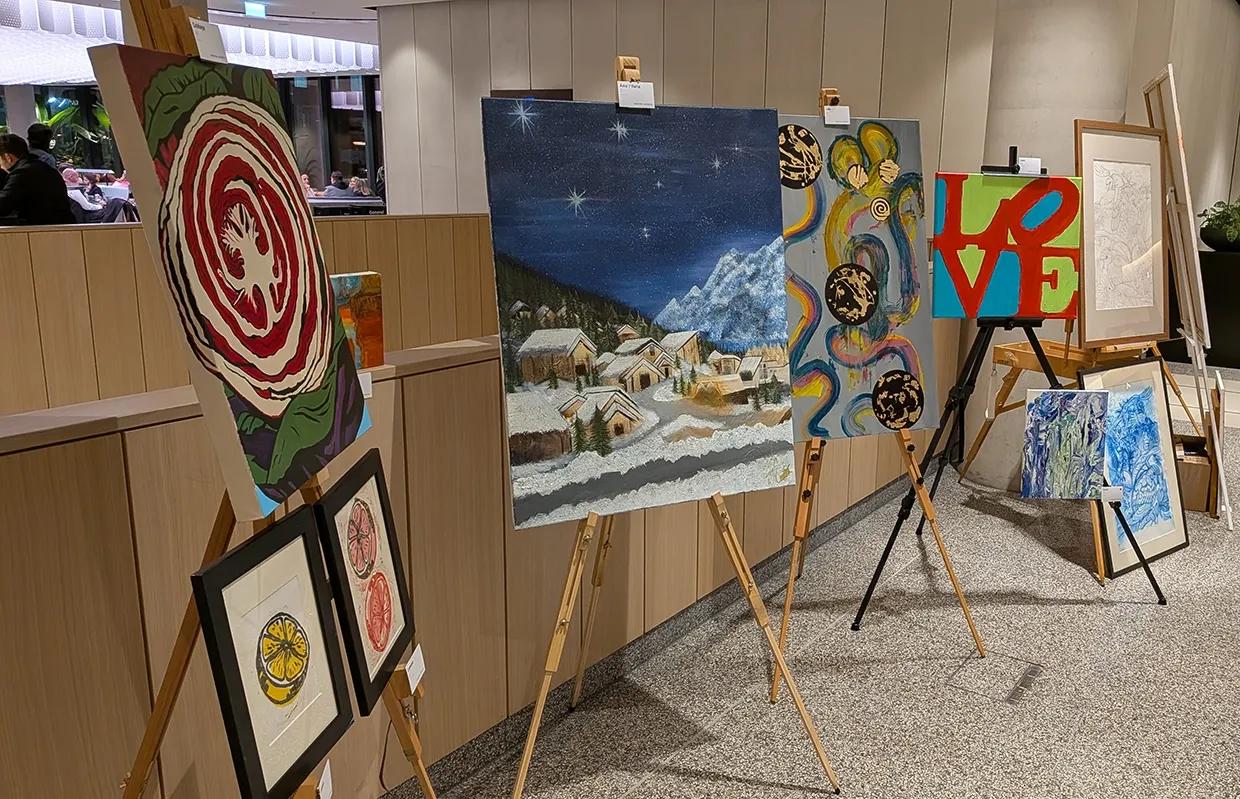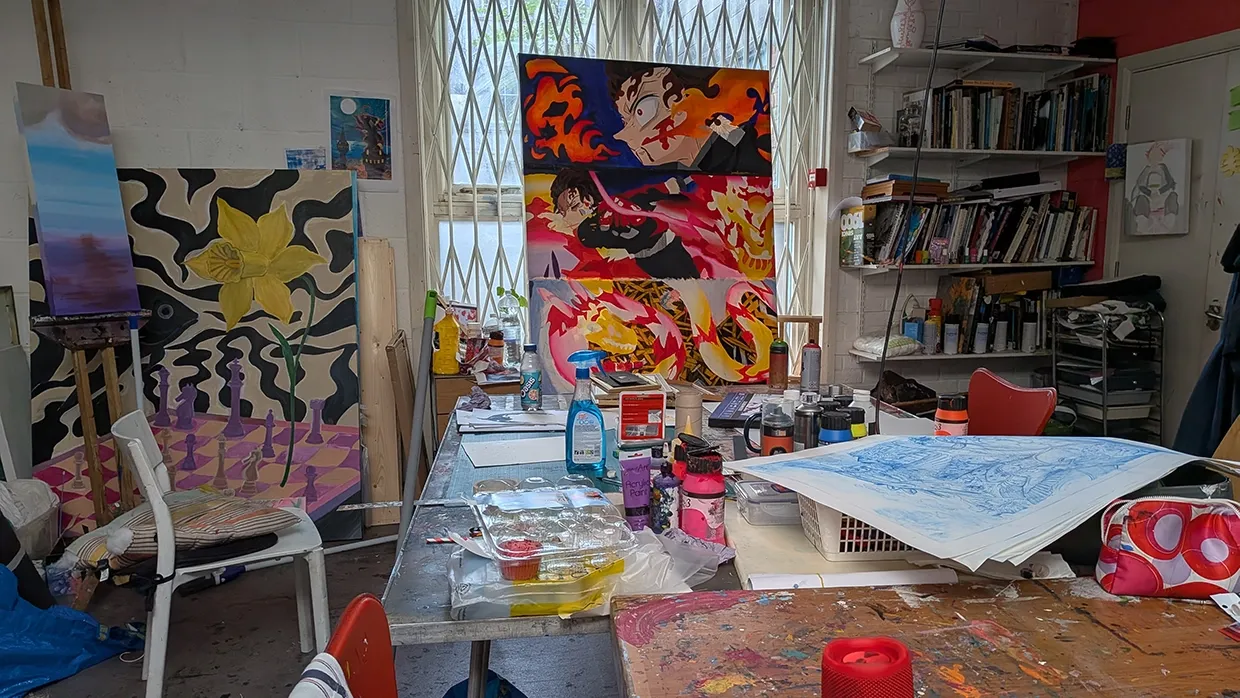A new exhibition is challenging ‘stereotypes and myths’ around homelessness and addiction through the power of art.
Existential is made up entirely of work by people rebuilding their lives following struggles with addiction or homelessness.
The exhibition at Cob Gallery marks the 60th anniversary of Spitalfields Crypt Trust (SCT), a Hackney-based charity supporting people who are homeless or recovering from addiction. The organisation runs an art programme as part of this - and the work created during these sessions are displayed annually.

SCT CEO, Louisa Snow, said: “We’re constantly trying to challenge the stereotypes and the myths around homelessness and addiction.
“It’s a great opportunity to show another side of that, that people can be creative and they can engage in something really positive and rewarding for them and that recovery is possible.”
For art teacher John Gosnell, who is also a previous service user at SCT, the lessons he received back in 2015 were crucial in getting him back on his feet.
“Art’s been a fundamental part of my recovery,” Gosnell said. “One of the problems with people coming out of addiction is that your brain’s a bit like a washing machine, so it’s a way of getting that to switch off a bit more.”
Painting had a meditative effect for Gosnell, which he says helped him put his life into perspective. He continued: “I wouldn't be worried about what's going on in the world. I wouldn't be worried about paying my rent or anything like that. I'd just be worried about this painting that was in front of me.”
After leaving SCT to pursue a career in art and become a qualified teacher, Gosnell returned four years ago, determined to give others the same opportunity he had.
He said: “It saved my life back in the day, so I have a lot of love for this charity and a lot of love for what we do.
“I've seen it change my life in a massive way and I've seen it change other people's lives in massive ways.”
Beginning as a night shelter and soup kitchen in a church crypt in Spitalfields in 1965, SCT has become a lifeline for thousands of people experiencing addiction and homelessness.
The charity runs a recovery hostel alongside a Housing First scheme which helps to move people without permanent housing into long-term accommodation without pre-conditions.
Snow said: “The hope is that people will begin to address the issues that have led to their homelessness if they’re given housing that’s affordable and sustainable with the right support.”
Homelessness in England rose by 20% in the last year alone, with 4,667 people estimated to be sleeping rough on a single night in autumn 2024, according to government statistics.

Key to the recovery process are SCT's training and development programmes, which include classes in creative writing, gardening, woodwork and, of course, art.
Snow said: “It [the classes] provides a really social kind of community space for people. So, they're not necessarily completely focused on their recovery the whole time, but it's a very collaborative and supportive environment for people in recovery.”
Many of the works on display are the result of painstaking work and commitment by Gosnell’s students. The Eye of the Beholder by service user Yves was painted entirely with a knitting needle.
Gosnell said: “He sits there and paints with it, and it's that switch off that you can just see it happening, and he's just not focused on anything else. It’s really beautiful.”
Burning Blade by Shaniqua is an acrylic painting which took more than a year and a half to make, depicting an episode of the Manga TV series Demon Slayer. Gosnell said the idea stemmed from a conversation about their deep love of the genre and desire to celebrate it in some way.
He said: “It’s been a labour of love for them because they're quite passionate about it and they've really enjoyed doing it, but it's also been a bit torturous as well.”
That balance between enjoyment and frustration is a key part of Gosnell’s creative process, too.
He said: “You know, some days you're going to love it [making art], other days you're going to absolutely hate it and some days you're going to think it's the best thing in the world, but it’s not about that bit of it.
“It's the process of doing the work that is quite a rewarding and soothing thing for a lot of people in recovery.”
The exhibition opened with a private view on 20 November by internationally-acclaimed Irish photographer Gareth McConnell, an artist whose work has been heavily influenced by his own experiences with drug addiction.
He said: “On a fundamental level, addiction is about consumption. Focused on consuming, whatever that may be. Whereas art is about creation, and they’re two opposing forces. So just in that fundamental way, to shift the direction of that energy in itself, is a very powerful thing.”
A Hackney resident for the last fifteen years, McConnell has a close relationship with Acorn House and Gosnell. He added: “I know a lot of people who have been through it and who work there, it would be a subject close to my heart.”

On top of art’s therapeutic benefits, McConnell says an artist’s willingness to have their work publicly displayed can be another step in their recovery.
He said: “People generally don’t want to make themselves vulnerable, and often the way to do that is to remain completely isolated and alone and hidden which can quite possibly have a death sentence.
“Anything that can bring you out into the light of day and into society or face a rejection, or praise, is a good thing.”
Gosnell added: “It moves me quite a lot when I see it happen. I just see them putting themselves out there, which is a really hard thing to do, especially if you're in early recovery. I think it's a very beautiful thing to watch.”
Almost a decade ago, Gosnell’s second exhibition with SCT led to his first art sale. He said: “Maybe it helped me to go off and do what I do now in some context. It gave me the confidence to go and try.”
Hopefully some of the artists displaying their work this year will have the same fortune. Each piece will be up for sale, with 50% of the proceeds going to the artist and the other 50% going to SCT.
Existential is on display at Cob Gallery, Blooms Yard, 2nd Floor, 100 Liverpool Street, London EC2M 2AT from 21 November to 4 December from 10am – 5pm on weekdays.






